POM Pomegranate Crème Brûlée
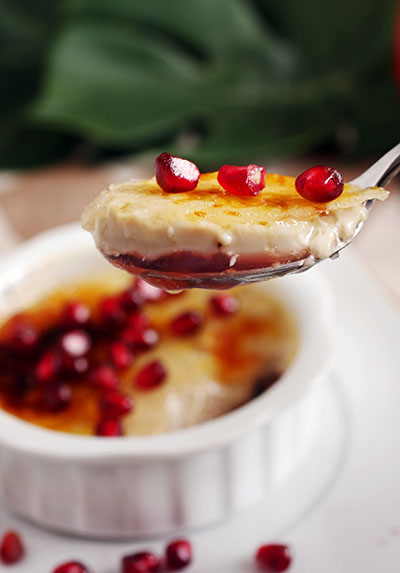 Most of what I like to cook is savory. I do have a couple favorite desserts, however. One is mousse, and last February, I made a POM pomegranate and white chocolate mousse for Valentine's Day. For this month's POM Guest Blogger entry, I decided to try incorporating pomegranate into one of my other favorite classic desserts, crème brûlée.
Most of what I like to cook is savory. I do have a couple favorite desserts, however. One is mousse, and last February, I made a POM pomegranate and white chocolate mousse for Valentine's Day. For this month's POM Guest Blogger entry, I decided to try incorporating pomegranate into one of my other favorite classic desserts, crème brûlée.
Crème brûlée is commonly served with berries, and the tart richness of pomegrante made me think they would go well together. I wanted to layer pomegranate jelly on the bottom, then form the custard over the top, followed by the crunchy sugar crust.
The pomegranate layer had to be denser than custard, or it would float to the top during the cooking process. While pomegranate-infused cream would be tasty, I wanted to try the layer idea, so I started with a pomegranate-gelatin mixture. The custard crème itself would be added warm, and I was worried the heat would almost certainly melt the gelatin, so I tried to be careful to reduce splashing when adding the custard. Browning the sugar was actually perfect for this experiment, because it masked the sides of the dish, where any seeping juice would be hidden. My grandmother, a lifetime baker, always says: "Frosting hides a multitude of sins", and, happily, that applies to caramelized sugar as well!
In the end, it worked really well, and was a very tasty dessert. The layers and taste were elegant and provided a wonderful, silky richness.
I tried to blend a couple recipe ideas, and I ended up with about twice as much custard as I needed, and about 2/3rds as much pomegranate juice. The recipe at the end of this post has been adjusted for eight 4oz ramekins, but the amounts in the pictures may not match the recipe. The text also refers to the recipe amounts and might also be different from what is shown in the pictures.
I started with the pomegranate gelatin, because I wanted it to be cold by the time the custard was ready. I poured 1 1/2 cups POM 100% pomegranate juice into a measuring cup and added one packet of unsweetened gelatin over the top. I let it "bloom" for a minute or so, then stirred the gelatin and pomegranate juice and added it to a warm saucepan. I heated just to the start of a simmer, then poured it back into the measuring cup to make it easier to pour into the ramekins.
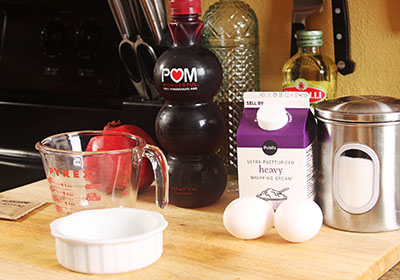


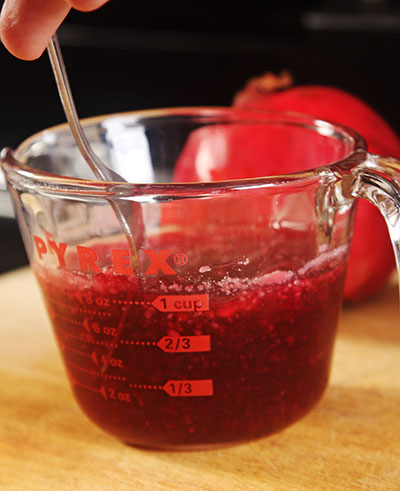


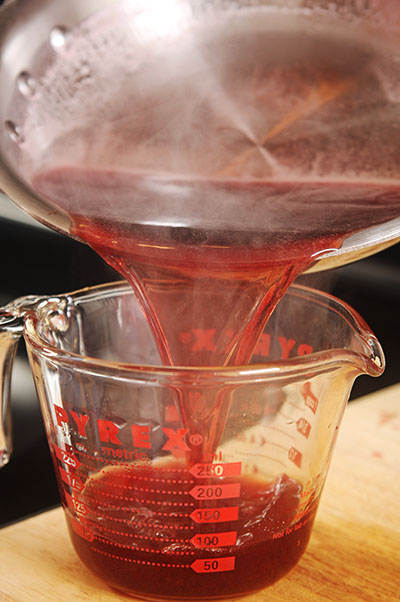
I poured about 1/4 inch of pomegranate gelatin into the bottom of each of the eight ramekins. I then put all eight in the refrigerator to cool and solidify, about 15 minutes.
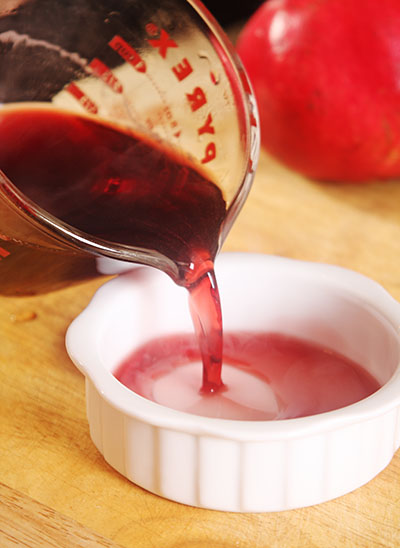
Meanwhile, I started the custard. I separated three eggs, placing the yolks in a bowl (I later ate an omelet with the whites). One more whole egg is added, then 1/3 cup of granulated sugar. These are mixed thoroughly.
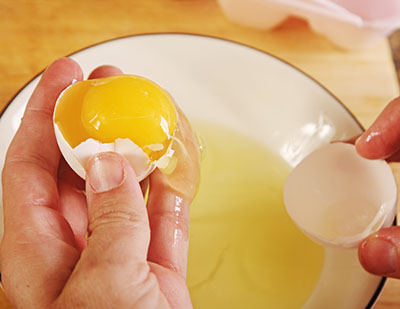
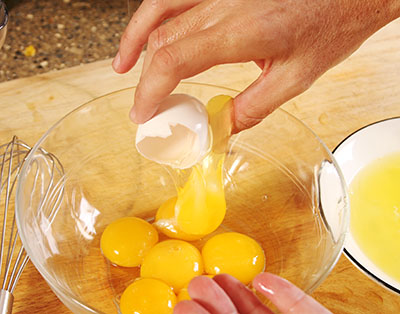
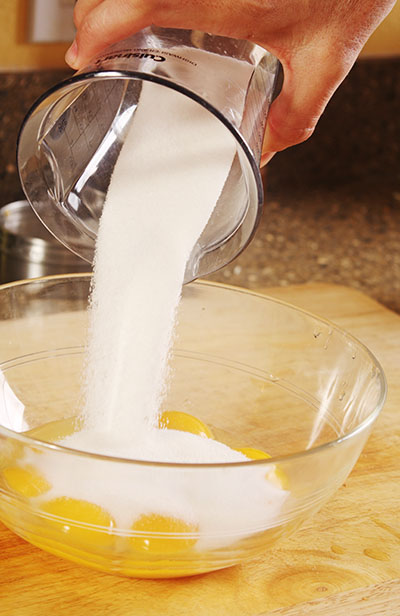
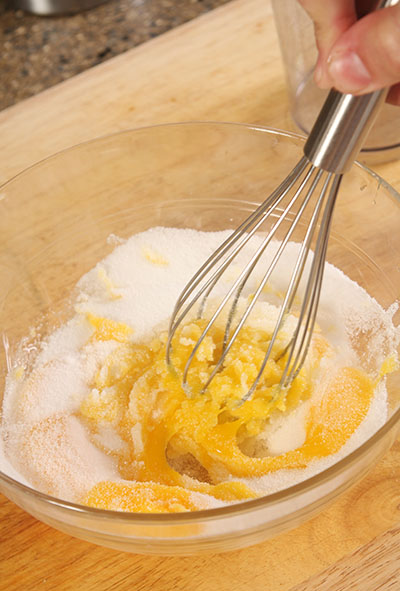
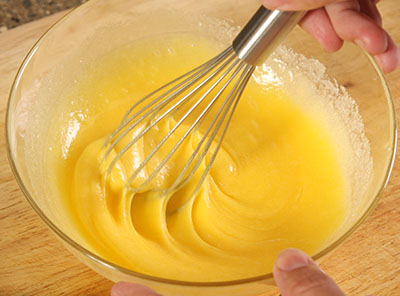
I added 1 cup of heavy cream and 1 cup of milk to a pot over medium heat, and heated until it started to simmer. I took the pot off the heat and added a teaspoon of vanilla, stirring to incorporate.
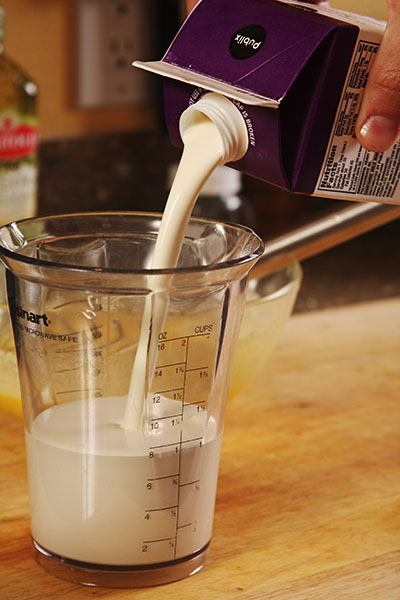
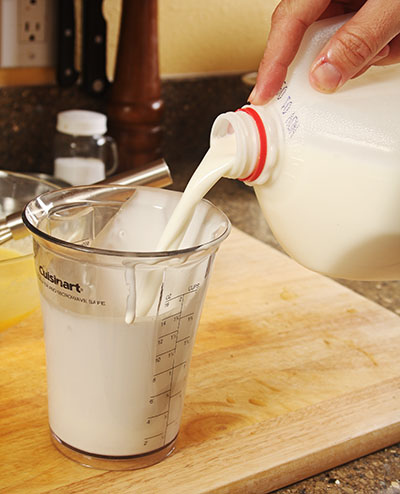
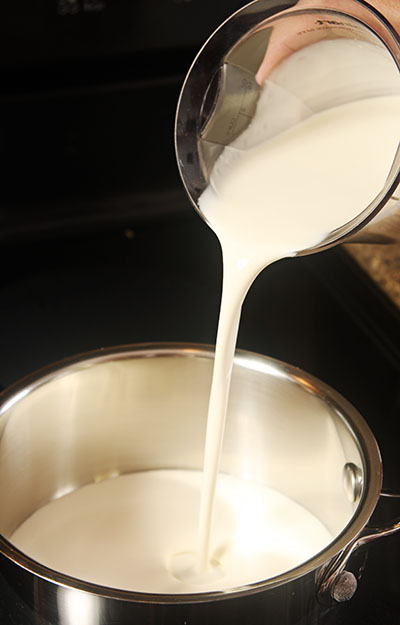
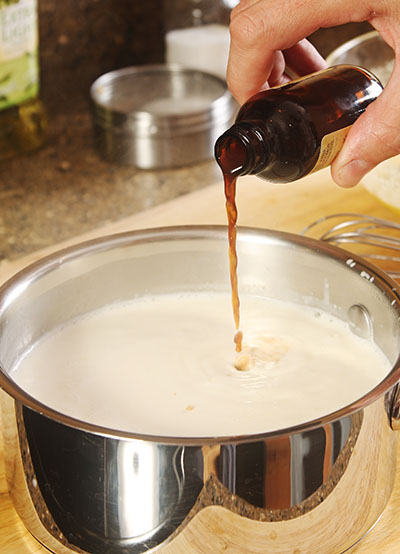
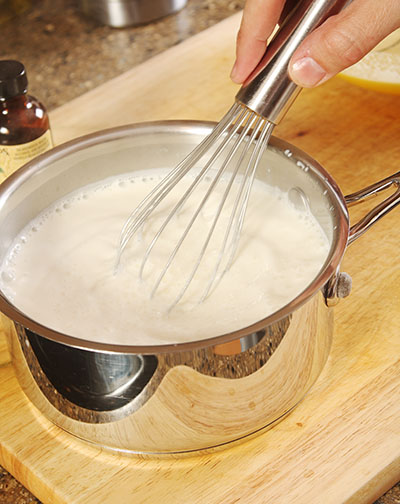
If the hot cream mixture is added too quickly, the egg yolks will harden, so the cream is added in a steady, thin stream as the yolks and sugar are stirred. There will probably be some foam because of the whisking, and this is skimmed off, leaving the pure, liquid custard.
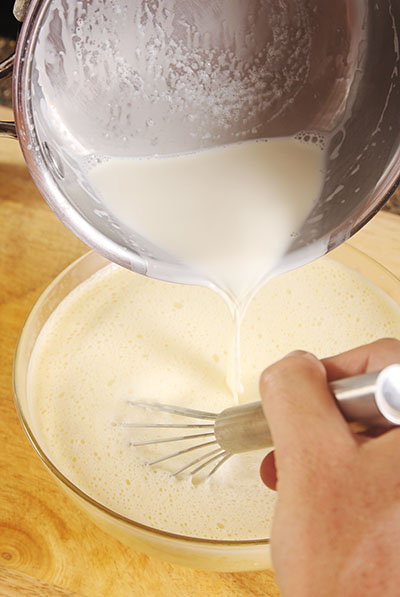

I removed the ramekins from the fridge, and placed them in a roasting pan. The custard mixture is still warm enough to melt gelatin back to a liquid again, so this next part was what I sweated about the most. I took a 1/2 cup measuring cup as a ladle, and as quickly and gently as possible, dumped the whole custard mixture over the pomegranate gelatin. When all eight were done, I added water around the outside of the ramekins until it came up about halfway -- this acts as a temperature balance and keeps the custard cooking evenly.
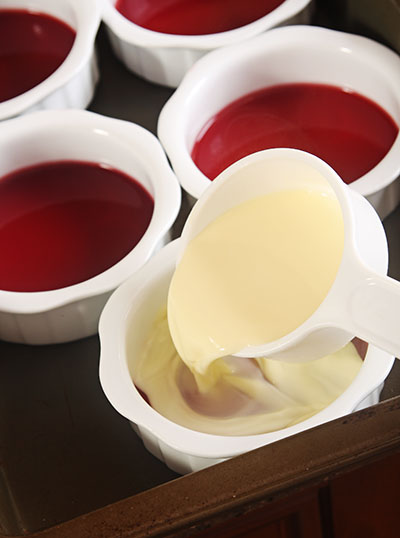
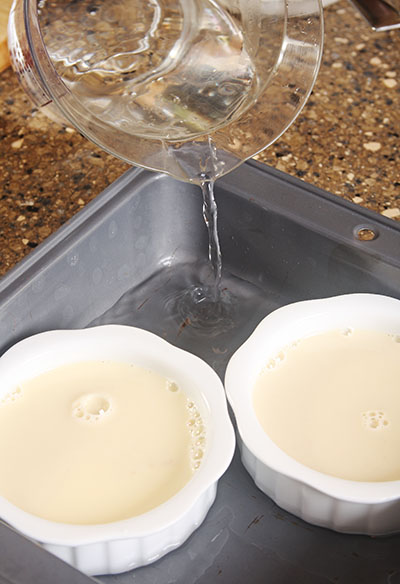
I put the roasting pan of water and ramekins into a preheated 325 oven and cooked for about 30-35 minutes. The custard should be just almost set -- a little jiggly when gently shaken, especially in the center, but not an obvious liquid, either. I actually cooked mine about 5 minutes too long, as the bubbly ones in the background show. That's okay, though! Remember the sugar crust will hide a lot.

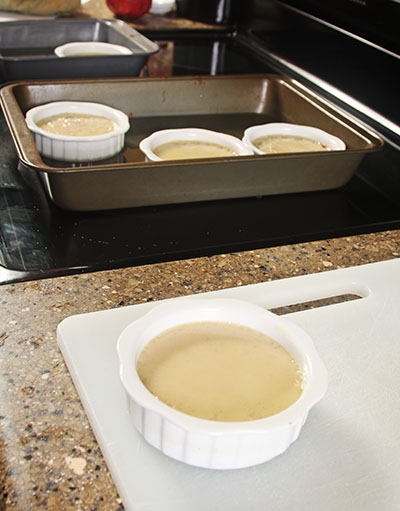
The custard has to finish setting, and the gelatin has to re-solidify underneath the custard (the oven almost certainly liquified it again). For 4 oz ramekins, that will be about 3 to 4 hours in the fridge, but overnight is good -- this is a dessert easy to make a day ahead. Just cover lightly with some clingwrap or parchment paper to keep the tops from drying out and getting a skin.
Once everything is set, it's time for the magic of the sugar crust. A teaspoon or so of sugar is sprinkled over the top of the custard. It should cover every bit of the surface, but not too thickly -- maybe 1/8th of an inch.
There are several ways to create the crust. One of the simplest is to turn the broiler on high, and just place the ramekins underneath (one at a time, or all at once). Make sure to keep a constant eye on it, because browning sugar can suddenly accelerate, going from toasty brown to scorched black very quickly. All of the sugar should have melted, with no grains near the edges, and the liquid sugar layer should be toasty brown in spots here and there.
A more direct method, with a little more control, is to use a torch. There are $50 butane "crème brûlée torches" in kitchen specialty stores, but I have a plumber's propane torch, which cost me $8, I think. Years ago, I was worried that I needed the butane torch, but I've since found that many dessert cooks use the propane instead as the butane sometimes leaves an off-flavor.
The torch can get into the nooks and crannies, but it also might blow the sugar around, so there's a sweet spot to find. It's not difficult, it just takes some concentration.
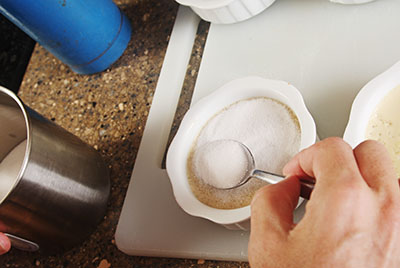
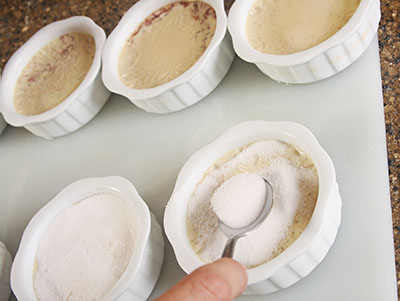
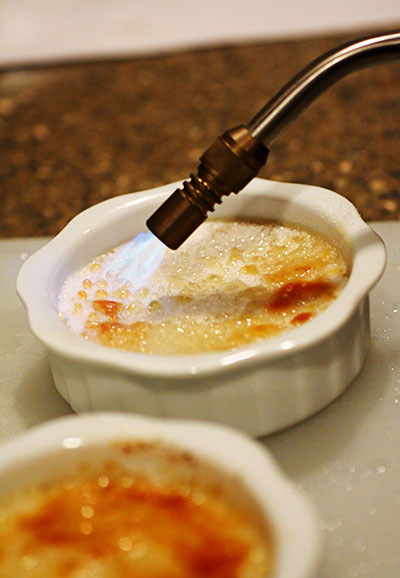
Once the ramekins cool to the touch, I added some pomegranate arils to the top, and dessert was served!

And the pomegranate layer worked!

POM Pomegranate Crème Brûlée 1 1/2 cups POM 100% pomegranate juice 1 packet unsweetened gelatin 3 large egg yolks 1 large egg 1/3 cup granulated sugar 1 cup heavy cream 1 cup milk 1 tsp vanilla 8 tsp granulated sugar (for crust) pomegranate arils for garnish



